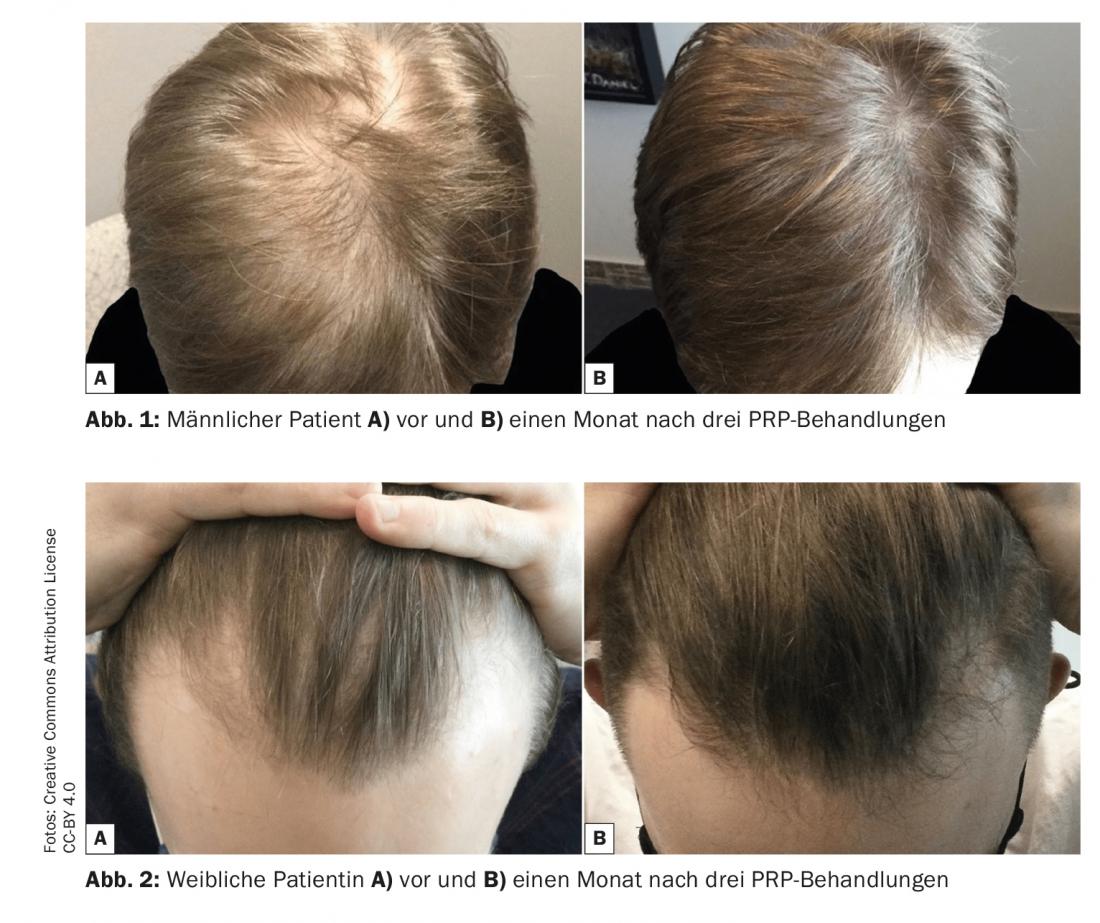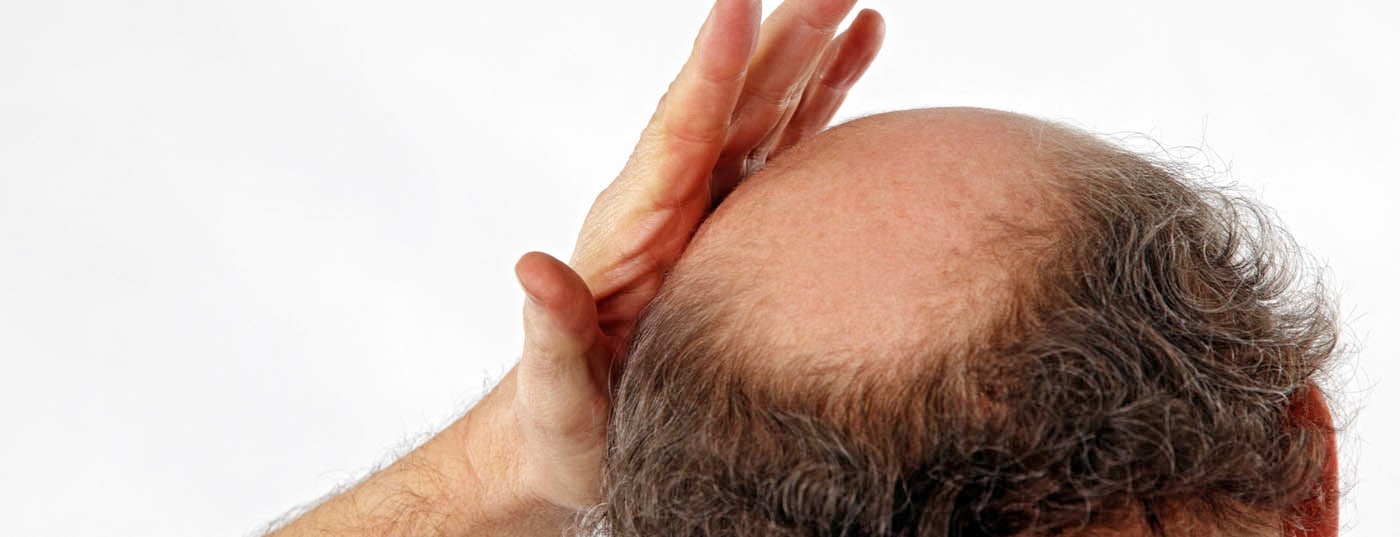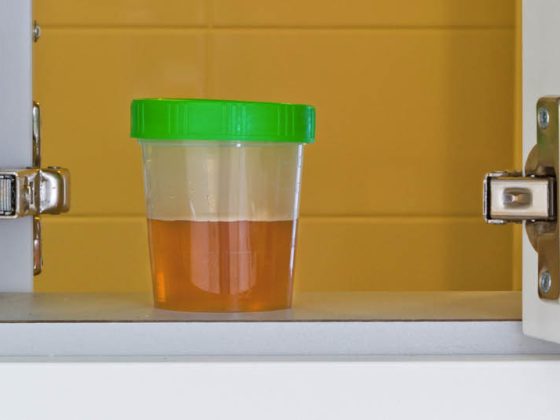Androgenetic alopecia is the most common cause of hair loss. In a clinical trial published in 2022, PRP achieved promising results and high patient satisfaction in both women and men. Overall, this innovative treatment method was convincing both in terms of efficacy and tolerability.
Hair loss is a common disease in the Western world. Genetic hair loss (androgenetic alopecia, AGA) plays a special role, with a prevalence of up to 80% in men and 50% in women [1]. In many individuals, AGA occurs in a discrete form from late puberty and accentuates throughout life [2]. Pathogenetically, hypersensitivity to dihydrotestosterone (DHT) induces a significant shortening of the anagen phase with miniaturization of hair follicles [2]. DHT is a steroid hormone that is also found in the scalp and shortens the growth phase of the follicles. Mechanistically, AGA is a telogen effluvium [3]. Due to different androgen sensitivity of the scalp regions, AGA shows a central or frontal distribution pattern with gender differences, the back of the head is not affected [3]. In the last decade, treatment with platelet-rich plasma (PRP) has become a common method for treating hair loss. Autologous platelet-rich plasma is obtained from venous whole blood by a centrifugation process and contains a higher concentration of platelets compared with the latter [4].

Visible clinical effects and high patient satisfaction
In alopecia treatment, PRP was first used in hair transplants to achieve a better result, but now PRP has also been established as a non-invasive therapy for alopecia. From a clinical perspective, there is increasing evidence of the beneficial effects of PRP treatments [5]. In a case series published by Dr. Samuel Hetz (Ottawa, Canada) and colleagues, a total of 56 patients with androgenetic alopecia were treated with PRP over a 12-month period [6]. The average age of the study participants was 41 years (age range 20-68 years). 57% of all patients were male and 43% female. Fifteen cc of whole blood was spun for five minutes at a time in an ACP* double syringe (Arthrex Inc., Naples, Florida)#. Subsequently, the 5-6 cm³ of PRP obtained from this procedure was injected into the scalp. Forty-nine patients were treated with a series of three injections at monthly intervals, 3 patients received four injections, and 2 were treated with five injections. One patient each was treated with a series of seven and eight injections, respectively. Follow-up examinations took place one month after the last treatment. A self-administered questionnaire was used to assess satisfaction and clinical outcomes from the patient’s and physician’s perspectives. Overall, patients were satisfied with the therapy results. On a scale of 0 to 10, the average patient rating was 7.29 and the average clinician rating was 6.46. With an average score of 8 on a scale of 0 to 10, it is also very likely that patients will recommend PRP treatments to friends.
* ACP=Autologous Conditioned Plasma
# www.arthrex.com/orthobiologics/autologous-conditioned-plasma
Literature:
- Piraccini BM, Alessandrini A: Androgenetic alopecia. G Ital Dermatol Venereol 2014; 149: 15-24.
- Beise U: Hair loss, 11/2020 update, www.medix.ch/wissen/guidelines/hautkrankheiten/haarausfall, (last accessed 10/13/2022).
- de Viragh PA: “Androgenetic alopecia”. Swiss Med Forum 2018; 18(44): 900-906.
- Reith B: Autologous platelet-rich plasma in the treatment of alopecia. Current Dermatology 2021; 47(12): 534-543.
- Chen JX, Justicz N, Lee LN: Platelet-rich plasma for the treatment of androgenic alopecia: a systematic review. Facial Plast Surg 2018; 34: 631-640.
- Hetz S P, Martin J, Pototschnig H: Patient Satisfaction and Clinical Effects of Platelet-Rich Plasma on Pattern Hair Loss in Male and Female Patients. Cureus 14(9): e28801. doi:10.7759/cureus.28801. www.cureus.com, (last accessed Oct. 13, 2022).
DERMATOLOGIE PRAXIS 2022; 32(5): 56












